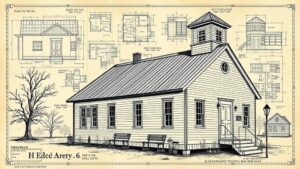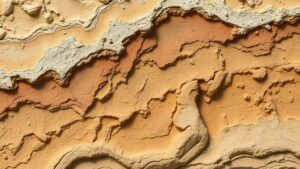How to Combine LiDAR Imaging and Historic Maps for Treasure Hunting
Introduction
The convergence of advanced technologies such as Light Detection and Ranging (LiDAR) imaging and traditional historic maps presents a transformative approach to treasure hunting. This modern methodology enhances the ability to locate and interpret potential archaeological sites and recover historical artifacts. By integrating the detailed topographic data provided by LiDAR with the contextual information found in historic maps, treasure hunters can greatly improve their chances of success.
Understanding LiDAR Technology
LiDAR is a remote sensing technology that uses laser light to measure distances and generate detailed three-dimensional representations of the Earths surface. According to the American Society for Photogrammetry and Remote Sensing, LiDAR can achieve vertical accuracy of a few centimeters, making it invaluable for mapping topography.
Applications of LiDAR in Archaeology
LiDAR technology has revolutionized archaeological research by revealing features often hidden by dense vegetation. For example, a study published in the journal Nature in 2018 showcased how LiDAR identified previously unknown Mayan cities in Belize, which were obscured from view by forest cover. Such applications demonstrate LiDAR’s ability to uncover sites of historical significance, facilitating treasure hunting efforts.
LiDAR Data Interpretation
Interpreting LiDAR data involves sophisticated analysis techniques. raw LiDAR data must be processed through specialized software, which generates Digital Elevation Models (DEMs). These DEMs highlight topographic variations, allowing treasure hunters to identify features like ancient roads, walls, or burial mounds. A compelling example is the discovery of the ancient city of Angkor in Cambodia, where LiDAR revealed a complex urban landscape previously uncharted.
Historic Maps as a Resource
Historic maps serve as crucial documents that provide context, revealing information about former settlements, pathways, and land usage. Such maps can be derived from various sources, including governmental surveys, merchant logs, and exploratory documentation.
Types of Historic Maps
- Topographic Maps: These illustrate terrain relief and features like rivers and hills.
- Cadastral Maps: Useful for understanding land ownership and property boundaries.
- Military Maps: Often detail strategic locations and infrastructure relevant to prior conflicts.
The Importance of Date and Location
When utilizing historic maps, one must consider the era they represent. For example, a 19th-century map of California might show mining sites that were abandoned by the 20th century, yet may still harbor valuable artifacts. Researchers must correlate the map data with current LiDAR findings to ascertain relevance and target potential sites effectively.
Combining LiDAR Imaging and Historic Maps
The true power of locating treasure and historical artifacts lies in the strategic combination of LiDAR data and historic maps. This dual approach enables treasure hunters to not only locate potential sites but also understand their historical context.
Methodology
- Step 1: Collect LiDAR data for the target area using regional datasets or through custom surveys.
- Step 2: Acquire historic maps relevant to the same geographical region and time period.
- Step 3: Overlay the historic maps onto the LiDAR-generated DEMs using Geographic Information System (GIS) software.
- Step 4: Analyze discrepancies and congruences to identify potential sites for excavation.
Case Study: The Search for Artifacts in Virginia
In Virginia, researchers combined LiDAR data with Civil War-era maps to locate the encampments of Confederate troops. The study, cited in The Virginia Magazine of History and Biography, identified significant artifacts through systematic excavations guided by the combined data, yielding historical insight and artifacts that have since become part of local heritage. This approach not only supports the search for treasure but reinforces the archaeological context behind historic events.
Challenges and Limitations
While the integration of LiDAR and historic maps offers exciting prospects, it is not without challenges. Limitations include data accuracy, the potential for ground disturbance, and the legal aspects surrounding excavation and artifact recovery. Ensuring land ownership rights and compliance with local regulations is critical.
Conclusion
The combination of LiDAR imaging and historic maps represents a paradigm shift in treasure hunting and archaeological research. By harnessing advanced technology alongside traditional map analysis, treasure hunters can increase their efficacy in locating historical treasures while also contributing to the preservation of cultural heritage. Future endeavors in this field are likely to uncover even more secrets of the past, fostering a deeper appreciation for history.
Actionable Takeaways
- Invest in GIS software for effective data analysis.
- Stay informed about local laws governing artifact recovery.
- Collaborate with archaeologists for a well-rounded approach to treasure hunting.


